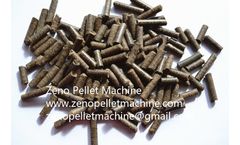Wheat Production Articles & Analysis
31 articles found
Wheat crops in the Americas, Asia, Europe, and Africa are regularly damaged by wheat yellow mosaic virus (WYMV), and there is a high demand for wheat varieties or cultivars that are resistant to this virus. ...
Therefore, there is a need to increase wheat production to meet the needs of the growing world population. Therefore, the possibility of planting wheat on salinity-affected soils is essential to feed the population and avoid economic losses in the countries involved. ...
The so-called fruit and vegetable processing means to maximize the nutrient content of the fruit and vegetable through various processing methods, improve the edible value, and make the color, aroma and taste of the processed product more perfect. Make the fruits and vegetables achieve the purpose of long-term preservation, durability, and access at any time. Further improve the ...
At the 2021 Cool Farm Alliance Annual General Meeting, Hal Hamilton, Co-Founder at the Sustainable Food Lab, moderated a thought-provoking session on “Enabling change – leverage points to scale regenerative agriculture and GHG emission reductions” with leading stakeholders from the agri-food industry and members of the Cool Farm Alliance: Luc Beerens, Global Sustainable ...
Through scientific and technological progress and innovation,a variety of usage have been found for the comprehensive development and utilization of crop straw on the world, especially in developed countries. In addition to the traditional crushing of straw and returning it to the field as organic fertilizer, there are also other usage like grass pellet maker machine, straw vaporization, straw ...
Micronutrient such as boron is the most important for the sustainable production of Basmati rice. Boron impacts the transport of carbohydrates, cell division, cell wall strength and development, the onset of fruits and seed development, and hormonal production (Gunes et al., 2003). ...
First of a five year trial producing wheat at reduced rates of NPK (50% to 75%). At Northam in the central wheatbelt of Western Australia in 2013, wheat cv. Eradu was sown into a pasture paddock to evaluate the effects of various rates of fertiliser in combination with Hibrix BB. Agras fertiliser was banded below the seed at sowing at 0, 25, 51, 75 or 99 kg/ha whilst Hibrix BB was applied to half ...
This seventh-generation family business uses farm management software to learn their annual cost of production on an accrual basis. The accessible, easy-to-use platform creates time-saving FSA reporting, crop traceability and historical data spanning generations. Read on to learn why the family attributes knowing their cost of production to helping them stay on farm to continue their family ...
Bread: Bread created from wheat flour has a global average footprint of 218 gallons of water per pound. Most of that water use, about 80 percent, is due to the flour that is derived from the wheat, so the exact water footprint of bread depends on the origin of the wheat and how it was grown. From 1996 to 2005, global wheat ...
Because of unevenly distributed precipitation in this semi-arid area, crop production largely relies on underground blue water (UBW) to irrigate, overexploitation of which causes a lot of environmental problems. In this paper, we first defined the representative division of winter wheat irrigation water production efficiency with a support vector ...
This study estimated the gains of virtual water, Phosphorus (P) and Phytic Acid (PA) through rice and wheat import to Ghana for the period 1998–2005, and assessed the implications of increasing rice import coupled with declining domestic production for food security. ...
The role of risks in the adoption of low–input wheat production in Switzerland is investigated using farm–level panel data. Due to governmental support with environmental payments, low–input wheat production is found to be on average more profitable. However, low–input production is also more risky, in particular ...
Although the world has had many years of experience in feeding nearly 80 million more people each year, it has much less experience with also providing for 3 billion people with rising incomes who want to move up the food chain and consume more grain intensive products. Whereas population growth generates demand for wheat and rice, humanities’ two food ...
But a far greater advantage is that the availability of tubewells ensures continued irrigation, and more irrigation means more food production. The figure below, compiled with assistance from Lina Kara'In '15 of architecture, quantifies that effect for wheat in the Indus. The gray curve tracks the expanding production of wheat ...
Global grain consumption fell significantly for the first time since 1995, as high prices dampened use for ethanol production and livestock feed. Still, overall consumption did exceed production. ...
Improved wheat grains storage management SmartScan25 was installed at the Israeli large flour mill to improve wheat grains storage management, save costs and reduce material losses. ...
By subsidizing wheat production at several times the world price, Saudi Arabia became the second largest Arab wheat producer in the early 1990s. At its peak, Saudi Arabia harvested more than twice the wheat it consumed, exporting the excess. But with the underground water supplies nearly depleted, wheat ...
World agriculture today faces pressure from many sources. On the production side, the amount of unused arable and worldwide has dwindled. ...
Managing dual-purpose wheat is complex because of the tradeoff relationship between cattle (Bos taurus) and wheat (Triticum aestivum L.) production. ...
Root-lesion nematodes (Pratylenchus neglectus and P. thornei) are widely distributed and substantially reduce grain yields in wheat (Triticum aestivum L.)-producing regions of the Pacific Northwest (PNW). The objective of this research was to determine if wheat and barley (Hordeum vulgare L.) cultivars differ in tolerance to these nematode species. ...














